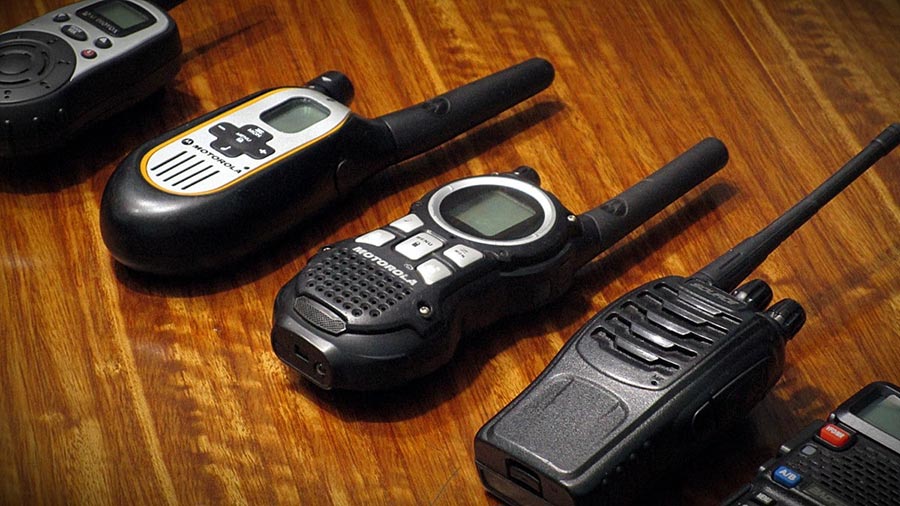Today i have come up with a very useful tool for any technician, especially for network technicians.You often find yourself in a ball of cables, looking to find the correct one.Worry no more, this circuit is going to help finding correct cable for you.I have designed and built a simple cheap cable tracer circuit which only costs under $2 to make.It is divided in two parts.
- Transmitter – It injects an audio frequency signal into the cable
- Receiver – It picks up the audio frequency and amplifies it.
Let's get into the working of this cable tracer.
CABLE TRACER TRANSMITTER:
CIRCUIT DIAGRAM OF TRANSMITTER:
This is the transmitter part.There is really nothing fancy about it, just a relaxation oscillator, working in an astable mode, at around a frequency of 800Hz.It injects a a harmonic rich audio tone in the open line cable.You may notice the ground symbol is different from the receiver part.That is intentional and the transmitter part of the circuit must have a connection to Earth Ground.You can either use a direct outlet Earth lead to ground your circuit, or you can use your body capacitance to earth through which you can ground the circuit.Sometimes the latter is desirable, where the grounding system is too noisy.
The output is taken from a push pull output stage, mainly because, as the cable to be traced gets longer, stray capacitance increases.A typical low power op amp, may start distorting the square wave (particularly the rising edge) as the cable run increases.An output stage delivers more ,,punch,, to the current handling capabilities of the circuit and is desirable to keep.You may also want to add diodes in reverse bias to the output transistors, to keep big capacitance from damaging the output transistors.I personally think this is a bit overkill, but from a strictly heuristic point of view, these diodes could preserve the output transistors from damage in certain circumstances.
CABLE TRACER RECEIVER:
CIRCUIT DIAGRAM OF RECEIVER:
This is the receiver part of the circuit.I will once again stress out the difference in ground symbols.This device must be completely separated from the transmitter device.The ground symbols here indicate that the device uses the negative terminal of a battery as a ground rail, and not the Earth ground!On a first glance this looks like a typical non inverting voltage gain amplifier.And that is exactly what it is.The only difference is that the input has an extremely high impedance.Since the op amp I have chosen is a JFET input op amp, the only impedance determining component is the R1 resistor.Its value must be high enough to make sure that the channel don't pick up the small transmitter signal to ground.
The input is decoupled from the probe lead with a small 100pF capacitor.The high frequency response of the amp is suppressed with the 15pF capacitor (C2).It grounds high frequency signals, as to stabilize the high gain amplifier from RF noise.The negative feedback is minimal and is controlled with the potentiometer RV1.The output of this op amp is not sufficient to drive any kind of speaker properly, even a high impedance one, so a simple voltage/current gain output stage is added to drive the speaker.The speaker I used is from an old payphone and has a nominal impedance of 500ohm.The sound is not very loud, but you can simply substitute the speaker with a lower impedance one.But always keep in mind about your transistor power rating.
HOW TO USE:
- Connect the end of your desired wire to the circuit, adding conductive contact with the circuit is sufficient.
- Turn ON your transmitter, it will put in the audio tone into the connected wire.
- Now go to the pile of wires where you have stuck in finding the right cable, and bring the receiver closer each cable.
- When speaker in your receiver sounds, it indicates that the right cable is found.You have found the correct cable with minimal efforts













schematic is missing.image site no longer exists
The 2 x Schematics are clearly shown on the webpage, underneath the headings of "CIRCUIT DIAGRAM OF TRANSMITTER" and "CIRCUIT DIAGRAM OF RECEIVER".
pls the schematic
Why the receiver don't have an attenna but you can receive the frequency
It clearly shows an antenna in the Schematic.